This week I finally got around to repotting a red pine forest that hadn’t been worked on in a while. Midway through, I paused to take note of the different techniques I was using to do the work.
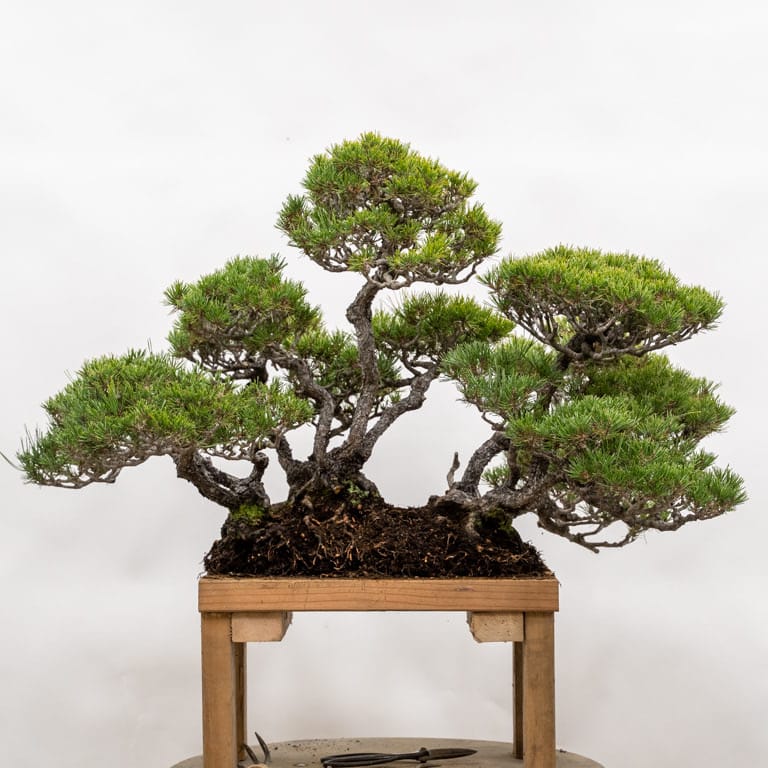
Midway through the repot
I’d started by combing out the mat of roots growing along the bottom of the pot.

After taking the tree out of the pot

After pruning the bottom of the root ball
Next, I removed a half inch of soil from the sides of the root ball with a root hook.
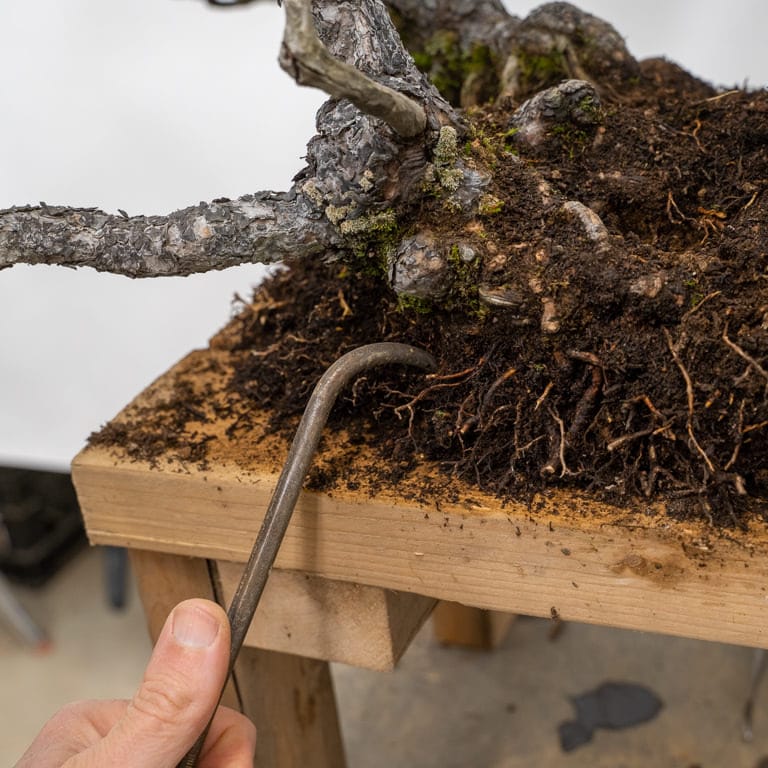
Reducing the root ball with a root hook
The next step was to chip away at the top half-inch of soil which had formed a crust and had made the tree hard to water. I used a small root hook to do this work by twisting it to the side and prying off one section of soil at a time.
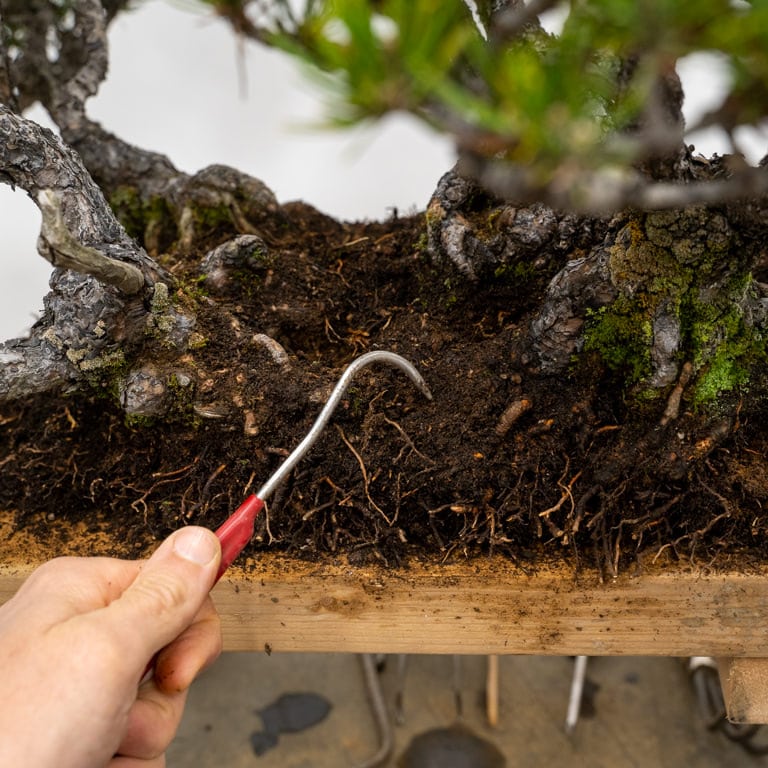
Breaking up the surface soil with a small root hook
I combed out the surface roots with bent-nose tweezers.
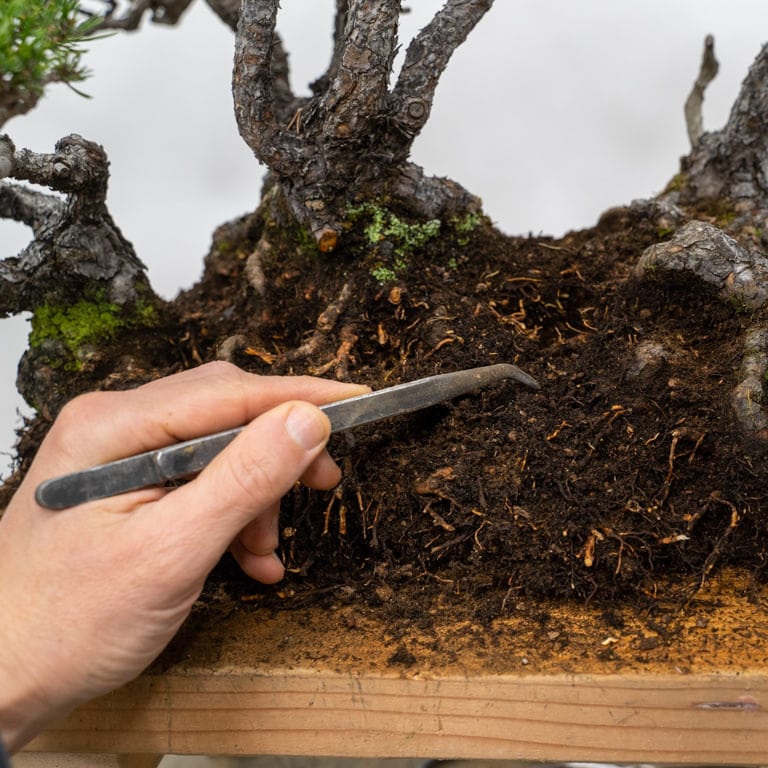
Combing out the surface roots
The following step was one of the most important. I used a screwdriver to perforate the root ball and create holes that I could fill with new soil.
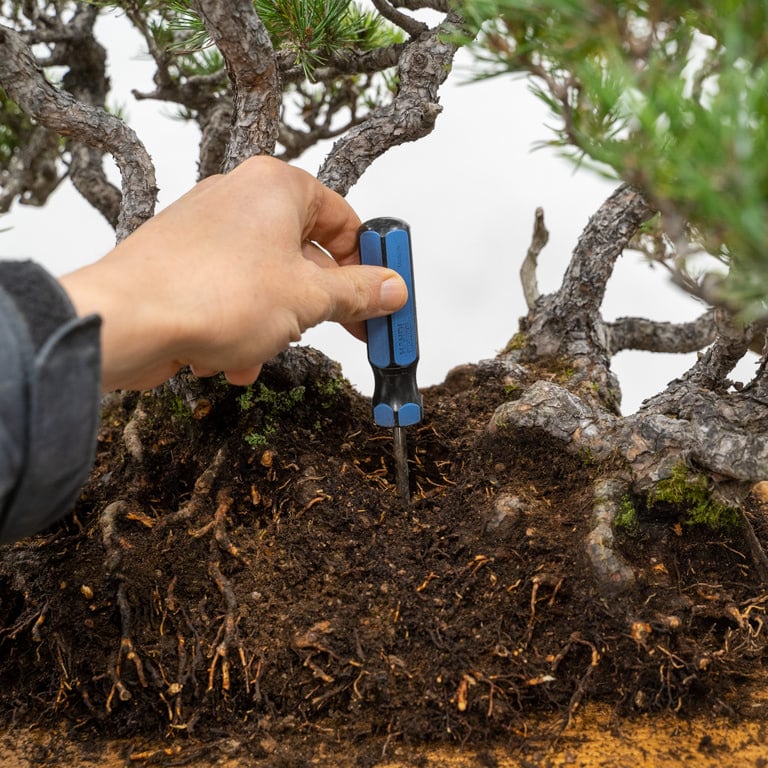
Using a screwdriver to create holes in the root ball
Perforating the root ball will make the tree easier to water and the large holes with fresh soil will offer new roots plenty of space to grow.
Altogether I spent two or three hours repotting the tree. When I was done, I applied a thin layer of shredded New Zealand sphagnum moss to hold the loose soil in place.

Repotting complete – 21″
Why use so many tools to do this work? It’s a combination of comfort and effectiveness.
- The larger root hook allows me to quickly break away the edges of the rootball without disturbing the lowest branches.
- The small root hook allows me to remove soil from small spaces and easily apply leverage to break away crusty patches of soil.
- The bent nose tweezers are good for combing out roots because the soft angle lets the tweezers glide along over roots without catching on them like a root hook would.
- The screwdriver is stronger than bamboo (and more comfortable to hold) which makes it a perfect tool for perforating the root ball.
I’ll often do all of this work with bamboo chopsticks when the soil is soft or there is more space to work with, but I don’t hesitate to use additional tools when it can make the work speedy or comfortable.
Do you have favorite repotting tools in your toolbox? Let us know in the comments below!
✕
Subscribe to Indian Bonsai Art
New Posts Delivered Every Tuesday and Friday
Reader Interactions
This site uses Akismet to reduce spam. Learn how your comment data is processed.
